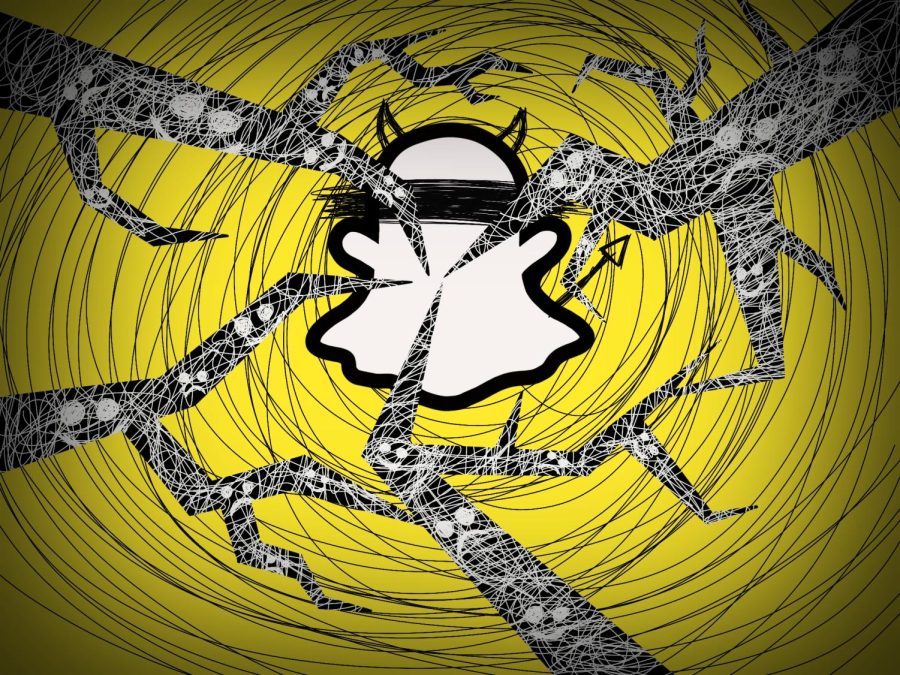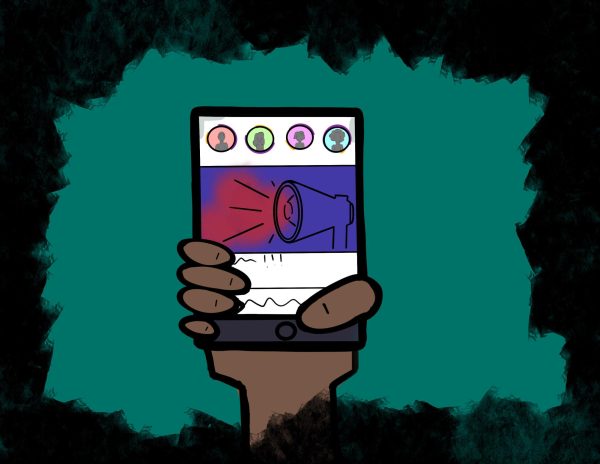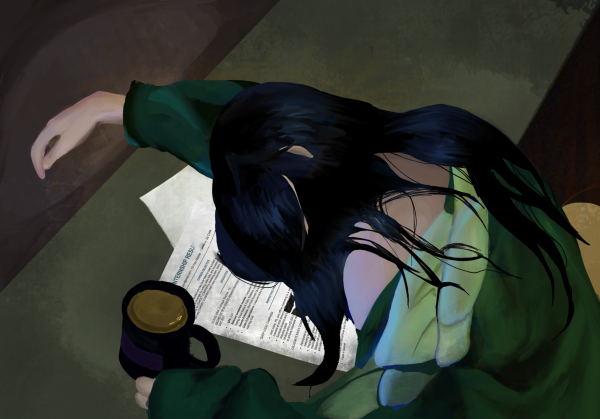Snapchat Dangerous For Teens’ Mental Health
Snapchat is bad for mental health.
Snapchat: the internet phenomenon that seems to have moved towards the forefront of social media within the past few years. 265 million global users log in everyday and 59 percent of all U.S. internet users aged 13 to 24 years use Snapchat, making it the most popular social media network amongst teens.
There’s no surprise as to why younger generations tend to favor an app like Snapchat. It allows users to connect quickly with other people, check up on each other throughout the day, and earn special “charms” based on how often they communicate with others. In a world in which social interaction is so closely connected to our virtual presence, it makes sense why Snapchat has become so popular.
While this app may be groundbreaking for young users looking for a quick chat or photo with a friend, there are issues with the way the app keeps its users entertained that originate far beneath the surface.
To start off, it is important to recognize the ways Snapchat can result in users becoming overly dependent on the app for gratification. The way in which Snapchat notifies users if one of their friends begins typing a chat keeps them on the edge, constantly waiting for a reply. The user is likely to repeatedly continue to log into the app as they receive these notifications, not wanting to wait a long time to see what the message says. Additionally, the feature known as “streaks” encourages users to log in everyday and repeatedly snap someone to earn a number token by their friend’s name. While this may be a fun way to test how long you can consistently stay in touch with someone, it forces users to feel overly attached to the app, not wanting to forget to log in and lose a streak. In fact, Snapchat actually displays an hourglass emoji by someone’s name if a user is close to losing their streak with them, further encouraging addictive and dependent behavior in users, and overall contributing to a feeling of fear and anxiety of losing connection with someone else.
Another negative aspect of the app that may not be observed right away is the way it puts its users in harm’s way through features like Snap Map. This feature allows users to see the location of their friends at any given time, as well as see the last time they logged in. While users are able to turn their location off for certain people, there is a feeling of guilt that comes with being uncomfortable with 1 of your “friends” seeing where you are.
The resulting pressure to broadcast your location can be incredibly dangerous. After all, from a young age, our parents advised us not to share our address or current location with people who we don’t know. Anyone who has access to someone’s location on Snapchat can easily use apps like Google Maps to figure out someone’s street and address. This is an obvious bad idea to anyone with an understanding of digital safety. However, because it is so normalized on Snapchat, it can be hard for users to see the danger in it, and disable it.
Snap Map, along with other aspects of the app, can also invoke a fear of missing out (FOMO) amongst users. Users are able to see if a group of people are together, which can be very hurtful to someone who is sitting at home, not knowing that their friends were hanging out until they logged in. While it’s inevitable to feel excluded sometimes, this feature can make it a much more common occurrence, severely damaging someone’s self-worth and leaving them feeling isolated from their friends on an app that is supposed to foster connection.
Additionally, users being able to see when their friends last logged in can encourage bad everyday habits, and promote an unhealthy daily routine. If a user sees 1 of their friends logged in 45 minutes ago, for example, but they have something they want to tell them before they go to sleep, they are likely to stay awake until the person logs in. The thought of someone chatting you, and not being able to see it until the next morning, is frightening to people who value virtual communication so much. The quick back-and-forth responses can encourage someone to stay awake late into the night, not wanting to cut off the conversation with a friend.
Finally, the number of snaps someone has sent since 1st downloading the app, also known as a snap score, is visible to everyone. While this aspect may not seem too harmful at 1st glance, it can alter one’s view of a person they don’t even know. For instance, someone with a lower snap score may seem less popular or more socially isolated than someone with a much higher snap score. This can cause a user to compare their snap score to others, worrying about the way the number displayed by their name shifts others’ perceptions of them.
Another way this snap score feature can encourage unhealthy behaviors in users is by creating an obsession with constantly checking someone else’s snap score to see if they are talking with others, but ignoring you. Users on Snapchat can refresh the app in order to see if someone’s snap score is increasing, in order to determine whether the person is purposely not talking to them. This can cause someone to be overly dependent on someone else’s attention – constantly checking the app to see if the person is prioritizing their interactions with others over them.
Whether we as teens realize it or not, many of the features that make Snapchat so appealing are also what make it an arguably toxic app. Through the way in which Snapchat manipulates its users to stay on the app, as well as the way it causes users to view their relationships with others, it can be extremely damaging to a person’s mental health. While we aren’t encouraging people to delete the app completely, it’s important for users to be aware of the possible dangers of Snapchat, and to use it wisely, in order to keep their minds healthy as they connect with others.
Your donation will support the student journalists of Campolindo High School's The Claw. Your contribution will allow us to produce more issues and cover our annual website hosting costs.

Freshman Mia Daly’s passion for freedom in prose drove her to join the writing staff for The Claw.
Daly has always loved writing and English classes....

Senior Grace Kelly’s passion for film led her to join The Claw art department. Kelly said, “Since I like making documentaries, journalism will definitely...


